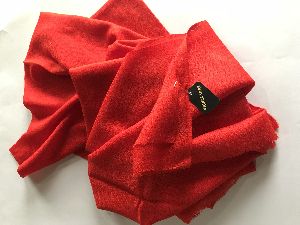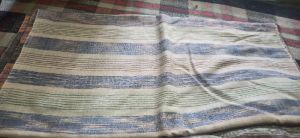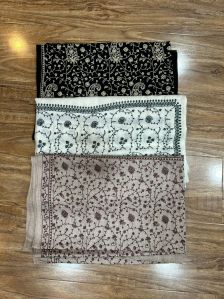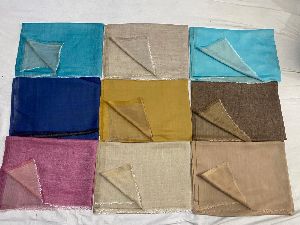
Pashmina Stoles
2,300 - 10,000 Per Piece
50 Piece (MOQ)

Stoles
Get Price Quote
We are into manufacturing of different types of stoles. We are one of the most famous cashmere pashmina stoles suppliers of india. Our stoles are manufactured using some of the finest quality fabrics, which in turn are obtained from the best suppliers and manufacturers. Our pashmina stoles have created a rage in the market with their quality and trend setting designs. Our silk pashmina stoles are available in different attention-grabbing colours that make people go crazy after them. Our superior stoles are available in the market at some of the most competitive prices.
Best Deals from Stoles

Aari Embroidered Stoles
Get Price Quote
We are bracketed among the distinguished Suppliers and Exporters of Aari Embroidered Stoles. The Embroidered Stoles we make available are crafted by skilled artisans. The USP of our stoles is beautiful embroidery work. We are capable of delivering bulk orders of the stoles within the promised timeframe owing to our excellent logistics network. One can obtain these at competitive rates from us.

Checkered Kashmiri Embroidered Stole
Get Price Quote

Cashmere Stoles
Get Price Quote
We are counted among the key Cashmere Stoles Manufacturers and Exporters, based in India. Our Designer Cashmere Stoles are designed as per the taste of the fashion frenzy ladies. Besides evoking the beauty of the ladies, our Luxury Cashmere Stoles are also provide a cozy and warm feel.

Viscose Stole
Get Price Quote
The Viscose Stoles that we manufacture are known for their designs and styles. These Viscose Stoles are soft and easy to maintain. Our Viscose Stoles are made using the latest techniques incorporating the latest trends and designs. Our Viscose Stoles are highly demanded by the urban working women for their style and comfort factor. Highlights Smart lookPerfect finishEasy to maintainLightweight Variety Available Various DesignColor range Different Sizes

Zari Border Pashmina Stole
3,700 Per Piece

pashmina turma
Get Price Quote

Embroidered Stole
Get Price Quote
Crafted to extreme perfection, the assortment of Embroidered Stole is developed by the most outstanding craftsmen. Embroidered Stole is designed using superior quality fabric. We supply Embroidered Stole in diverse shapes and sizes, to befit the patron’s demands. Available in diverse colors, patterns and designs the Embroidered Stole we bring in the market. Designed With Kashmiri Ari workQuality fabric Ideal for Casual wearFormal wear

Fine Woolen Stoles
Get Price Quote
Consider our name, if seeking for high quality products that are prepared using the best grade material and modern technology. Our associates procure it from the reliable names after complete quality satisfaction. Our clients are given the choice to make online or offline payments. We comprehend the requirements of our customers. Thus, we ensure our payment methods are legal, secure, and practical.

Black Pashmina stole
6,000 Per Piece
Black pashmina stole with fine hand sticth work. Multi colored fine kashmiri pashmina stoles with different shades and price ranges. Pashmina ladies shawls with kashmiri hand stitch work are also available on geniun rates.

Pashmina Stoles
3,500 - 3,800 Per Pc
100 Piece (MOQ)

Printed Stoles
900 Per Piece
100 Piece(s) (MOQ)
digital printed woolen stoles..

Silk Pashmina Stoles
Get Price Quote
Bringing the best of cashmere artistry in the form of Printed Pashmina Stole. We are a reputed name as Printed Pashmina Stole Manufacturer and Supplier in Srinagar, Jammu & Kashmir. We provide 100% Pure Pashmina (Cashmere) Stoles in a variety of prints and colors. The hand dyed Printed Pashmina Stoles that we offer are known for perfect finish and stitching.

Designer Stoles
Get Price Quote
Our designer stoles are produced using many materials, like, Silk, Wool, etc can be availed in customized colors. With the aid of diligent professionals and smart packaging system, we can easily render bulk and customized packaging requirements of the patrons. Also, we ensure that the packed lot has shock sustainability to circumvent loss during transit. Our dedicated staff is always on their toes to make certain that the raw material used is of high grade and certified by the experts as well.

Pashmina Stoles
Get Price Quote
We have parted our infrastructure into several units and one of them is warehouse wherein we keep a huge stock for furnishing urgent and quick requirements of the clients. We are supported by an advanced packaging system and make use of only high quality packing materials for ensuring complete safety during handling, warehousing and transit.

embroidery work fine wool stole
Get Price Quote
Available in Fine Wool and Pashmina

Zari Stole
Get Price Quote
Zari Stole

Pashmina Stoles
15,000 - 500,000 Per Bag

Plain Pashmina Stole
Get Price Quote